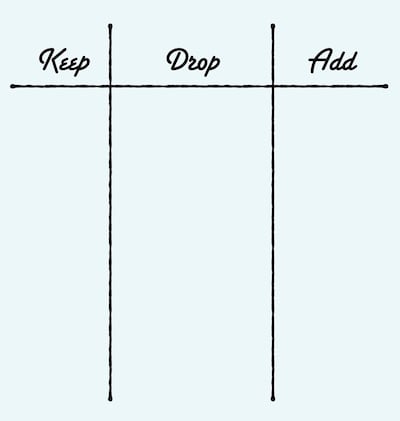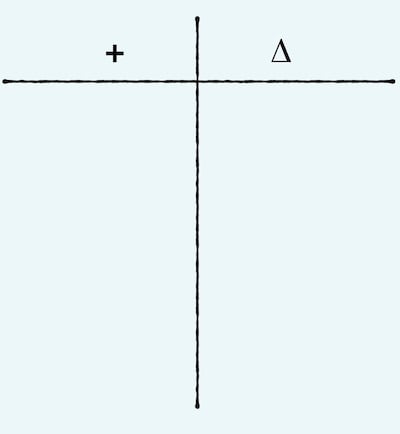Keep, Drop, Add

There are the four steps for this activity.
- Divide a sheet of chart paper into three columns. Label the columns with the words “Keep”, “Drop” and “Add”.
- Give everyone a pen (or Sharpie) and a few post-it notes.
- Offer the participants sixty seconds to write down ideas of things they want to keep, things that want to drop and things they want to add. One idea per post-it note.
- Ask the participants to place their ideas in the appropriate column.
As for definitions, here is how I define keep, drop and add in this context. I find giving these definitions before you start to be very helpful so that people know what types of ideas you are looking for.
- Keep: all the things the group wants to keep doing in the next Sprint (or meeting) that are helping them to succeed.
- Drop: all the things the group wants to drop in the next Sprint (or meeting) that are interfering with their success.
- Add: all the things the Scrum Team wants to add to the next Sprint (or meeting) that will make the next interaction better.
+’s & ∆’s (pluses and deltas)

This frameworks also has four steps which echo the steps of the previous framework.
- Divide a sheet of chart paper into two columns. Label the columns with the symbols “+” and “∆”.
- Give everyone a pen (or a Sharpie) and a few post-it notes.
- Offer the participants sixty seconds to write down ideas of things that they liked during the Sprint (or meeting) and things they want to change. One idea per post-it note.
- Ask the participants to place their ideas in the appropriate column.
There are also some useful definitions for the terms that should be explained before starting.
- +’s: things the group liked during the last Sprint (or meeting) that they want to continue in the next interaction.
∆’s: things the group did not like during the last Sprint (or meeting) that they want like to change or eliminate in the next interaction.
One additional note, both of the frameworks work very well on-line since the structure is very simple. Essentially, all you have are three (or two) columns in a table in shared document and people can add ideas as they pop into their head.
Finally, both of these Retrospective frameworks come from the excellent book, Agile Retrospectives: Making Good Teams Great, by Diana Larsen and Esther Derby. So if you do not have that book, be sure to buy it today.




